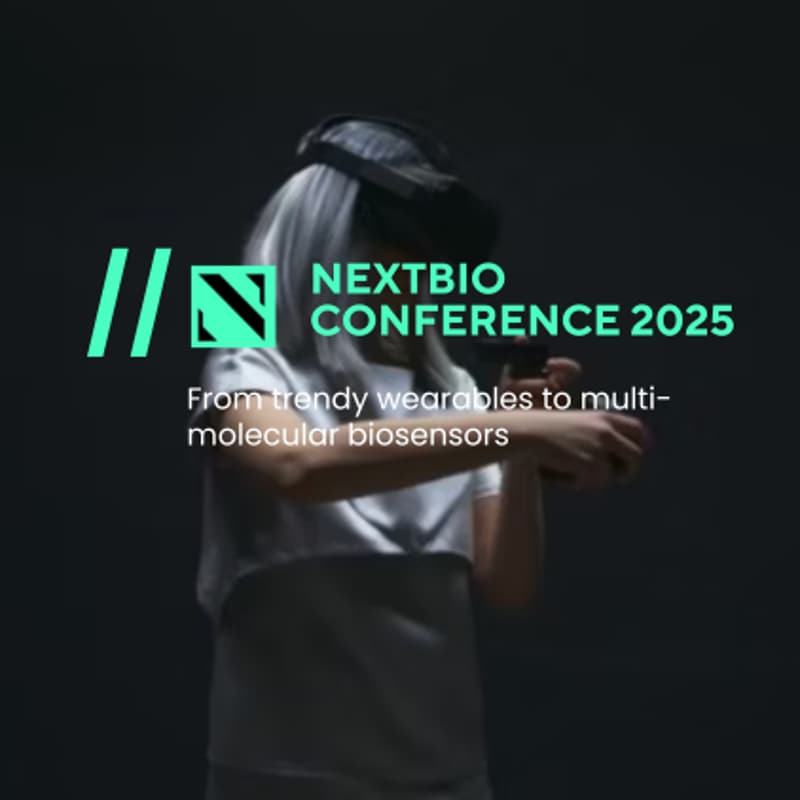

NEXT.BIO 2025 - From trendy wearables to multi-molecular biosensors
In October 2025, A16Z #SFTechWeek will once again take over San Francisco. We are organizing NEXT.BIO, a world-class week long tech conference featuring the best startups, industry leaders and investors in AI x BIO across a series of Tech Events, a unique Hackathon and a DEMO Day 🚀
This event is one of our Tech Event series part of the full-week conference.
🧩 Suggested Themes & Challenges:
Provide optional thematic tracks to guide students and encourage focused innovation:
Health Diagnostics: e.g., detecting biomarkers like glucose, cortisol, viruses, toxins.
Environmental Monitoring: e.g., multi-target detection of pollutants, heavy metals, or toxins (think multi-mycotoxin detection like OTA in wine using graphene aptamersarXiv).
Food Safety & Agriculture: e.g., detect pathogens, allergens, or food spoilage markers.
Wearables & IoT Integration: e.g., continuous monitoring via wearables or deployable sensor systems.
What is are the multi-molecular biosensors available datasets?
1. Koch et al. (2018) – Detectable Molecules Dataset
A manually curated dataset of compounds that can be sensed by genetically encoded, transcription factor–based biosensors. It includes:
Compound names, InChI structures, organism or context, detection experimental details, biosensor names, plus commentary on inclusion rationale.
Sourced from Bionemo, RegTransbase, RegulonDB, RegPrecise, Sigmol, and manual curation of ACS Synthetic Biology literature.
Freely available via GitHub:
github.com/brsynth/detectable_metabolitesPMC.
2. Sensbio Database
An expanded and more accessible form of the Koch dataset. Sensbio includes:
TF-ligand interaction pairs, with molecular details (SMILES, InChI), transcription factor sequences, species source, and metabolic context.
A toolbox for querying by chemical similarity (Fingerprints + Tanimoto), sequence similarity (BLAST), and predictive modeling.
Dataset integration from Bionemo, RegulonDB, RegPrecise, RegTransBase, Sigmol, GroovDB, and literatureBioMed Central.
3. "Table of Biosensors" (Townshend et al., 2022)
A dataset cataloging biosensor sequences and their responses:
Contains sequences of sensors tested against 267 compounds (at 10 μM), with fold-change data (≥2x, 3x, 5x, 8x).
Organized into 150 clusters based on compounds that trigger them.
Includes compound identities, response magnitudes, and sensor sequencesFigshare.
4. Cell Painting Gallery (Image-based Profiling)
While not a “biosensor” in the traditional sense, this resource offers:
High-dimensional image data of cellular phenotypes under chemical or genetic perturbations, measured via extensive staining protocols ("multi-molecular" profiling).
Encompasses 656 TB of data on AWS, including the JUMP consortium datasetsarXiv.
Particularly useful if you aim to link molecular perturbation to morphological responses.
5. M³-20M: Multi-Modal Molecule Dataset
A massive, multi-modal dataset of more than 20 million molecules, integrating:
SMILES, 2D graphs, 3D structures, physicochemical properties, and textual descriptions.
Primarily intended for AI-driven drug design and molecular generation/prediction—but its rich, comprehensive molecular representations can support biosensor modeling as wellarXiv+1.
6. Other Molecular Machine-Learning Benchmarks
These are broader molecular datasets that support predictive modeling, not specifically biosensors:
MoleculeNet – a benchmark suite of diverse molecular property datasets for ML (via DeepChem)arXiv.
OGB-MolPCBA – curated from MoleculeNet to address domain generalization issues in molecular property predictionwilds.stanford.edu.
Alchemy – dataset of ~120K molecules with quantum mechanical properties, useful for modeling purposesarXiv.
Quick Comparison Table
DatasetData Type FocusStrengthsKoch et al. (2018)TF-ligand detection recordsHigh-quality curation, curated biosensor dataSensbio DatabaseTF-ligand + sequences + tool for queryingInteractive, predictive modeling supportTable of Biosensors (2022)Sensor sequences + response magnitudesWide ligand coverage, sequence-response mappingCell Painting GalleryImage-based phenotypic profilingRich morphological readouts for perturbationsM³-20MMulti-modal molecule representationsMassive scale, structural + textual + property dataMoleculeNet / OGB-MolPCBA AlchemyMolecular property benchmarksStandard ML benchmarks, useful for modeling pipelines
Recommendation
If you're specifically focused on multi-molecular TF-based biosensors, start with:
Koch et al. (2018) dataset – solid foundation, manually curated.
Sensbio – excellent next step with enhanced querying and predictive modeling.
Table of Biosensors (2022) – adds real experimental response data, sequences.
If your work is broader—e.g. image-based perturbation profiling or AI-driven molecule generation—then:
Cell Painting Gallery and/or M³-20M offer deep, versatile datasets.
Need help accessing these or integrating them into your research tools? Happy to assist further!